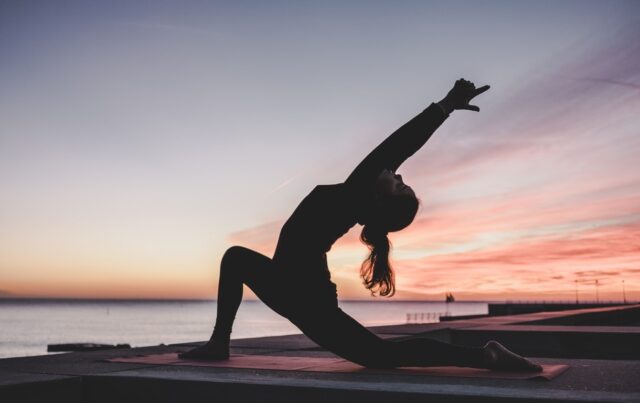The right yoga pose can do more than just give you a workout. It can also help you find inner calm and focus, relieve stress, lose weight, and improve your overall health. And while there are a lot of yoga poses to choose from, there are only a handful of poses that truly make a difference. These poses will get you started on the road to a healthier you.
We all know the basic yoga poses — the “Sun Salute” and “Tree Pose” to name a couple. But, if you’re new to practicing yoga, it’s probably the poses that you’re most familiar with that hold the most importance. So, in this guide, we’re going to break down the most important poses for beginners, and explain how to do them properly.
Yoga is the most effective and efficient way to improve your health, both physically and mentally. Yoga can also help you to lose weight and improve your overall health as well as increase your self-awareness. So, if you are looking to start this wonderful journey to a healthier life, you should try to learn the most important yoga poses first?. Read more about basic yoga poses chart and let us know what you think.
If you are new to yoga, there are certain postures that you must master before you can feel comfortable in a class or practicing on your own at home.
Since there are over 300 postures in the physical yoga practice (asana), it’s difficult to limit things down, but these poses may get you started. If you perform each of them for 5-10 breaths, you’ll have a fantastic beginner’s yoga routine to follow on a daily basis.
The ten most essential yoga postures for beginners are listed here. Note: You don’t have to be able to perform all of these postures precisely as shown – ALWAYS listen to your body and make any adjustments.
Before you continue reading, take advantage of our free 28-day online yoga program, which includes online sessions designed especially for beginners like you. Here’s where you may sign up for the free program. It’s like having a one-on-one yoga session with your own yoga instructor.
Mountain Pose No. 1
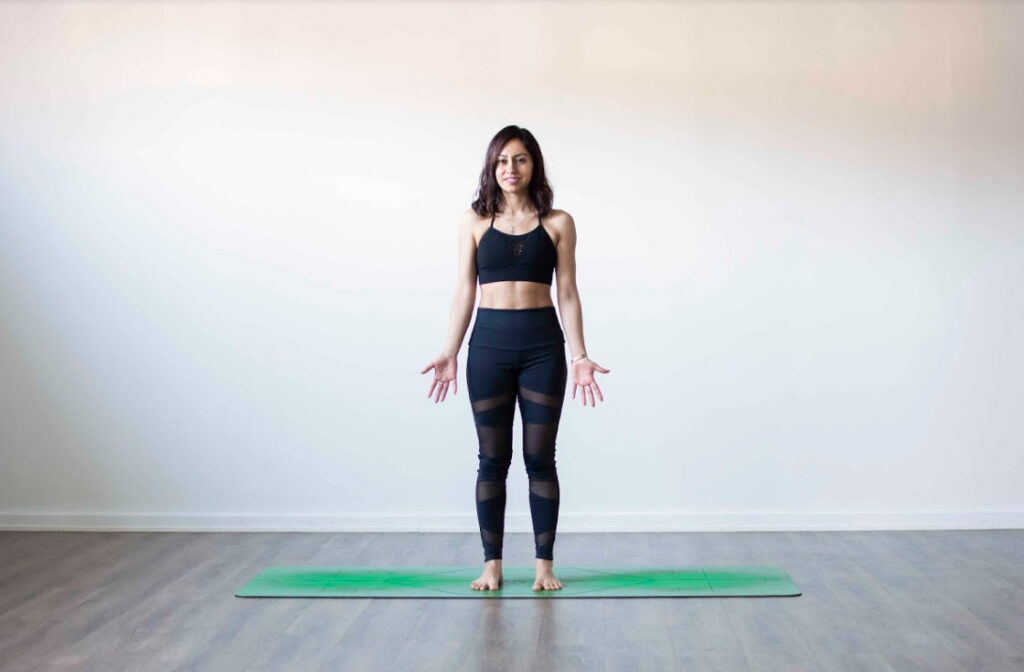
Mountain Pose is the foundation for all standing poses; it teaches you how to anchor yourself in your feet and experience the earth underneath you. Mountain stance may seem to be “just standing,” yet there’s a lot going on here.
Step one: Begin by standing with your feet together. As you stretch your toes wide, press down through all 10 of them. Lift up through the inner thighs and kneecaps by engaging your quadriceps. As you raise your chest and push the tops of your shoulders down, draw your abdominals in and up.
Open your chest and feel your shoulder blades come together, but maintain your hands pointing inwards towards the body. Imagine a thread connecting the crown of your head to the ceiling, and take a deep breath into your torso. Hold the position for 5-8 breaths.
This online yoga program is for you to use at home. The online yoga courses are designed to benefit both your body and mind, and they cover all of the fundamental types of yoga. It’s like having a yoga studio in your own living room. On your yoga mat, you’ll do your first sun salutations and begin practicing yoga at home like a true yogi.
2. Downward Facing Dog is the second position
Downward Dog is a yoga pose that stretches and strengthens the whole body. It is utilized in almost all yoga practices and courses. “A down dog a day keeps the doctor away,” I usually say.
Come to all fours with your wrists under your shoulders and your knees under your hips. Tuck your toes under and raise your hips off the floor, drawing them up towards your heels.
If your hamstrings are tight, keep your knees slightly bent; otherwise, straighten your legs while keeping your hips back. If necessary, walk your hands forward to give yourself additional length.
Rotate the inner elbows towards each other while pressing hard through your hands. To maintain the torso going back towards the thighs, hollow down the abdominals and keep your legs engaged. Before returning to hands and knees to relax, hold for 5-8 breaths.
3. Plank

Plank teaches us how to balance on our hands while supporting ourselves with our whole body. It’s a wonderful technique to develop the abdominals while also learning to utilize our breath to assist us remain in a difficult posture.
Tuck your toes beneath your knees and raise your legs off the mat while on all fours. Slide your heels back until you feel a single, continuous line of energy running from your head to your feet.
Engage your lower abdominals, bring your shoulders down and away from your ears, pull your ribs together, and take 8-10 deep breaths.
4. The triangle
Triangle is a great standing position for stretching the sides of your waist, opening up your lungs, strengthening your legs, and toning your whole body.
How to perform it: Begin by standing with your feet apart by one leg’s length. At shoulder height, open and extend your arms to the sides. Turn your right foot 90 degrees outward and your left toes 45 degrees inward.
As you bend to the side over your right leg, engage your quadriceps and abdominals. Lift your left arm to the sky while placing your right hand on your ankle, shin, or knee (or a block if you have one).
Hold your eyes up to your upper hand for 5-8 breaths. Raise yourself to your feet and repeat on the other side. When I’m in triangle position, I like to pretend I’m trapped between two tight walls.
5. Tree
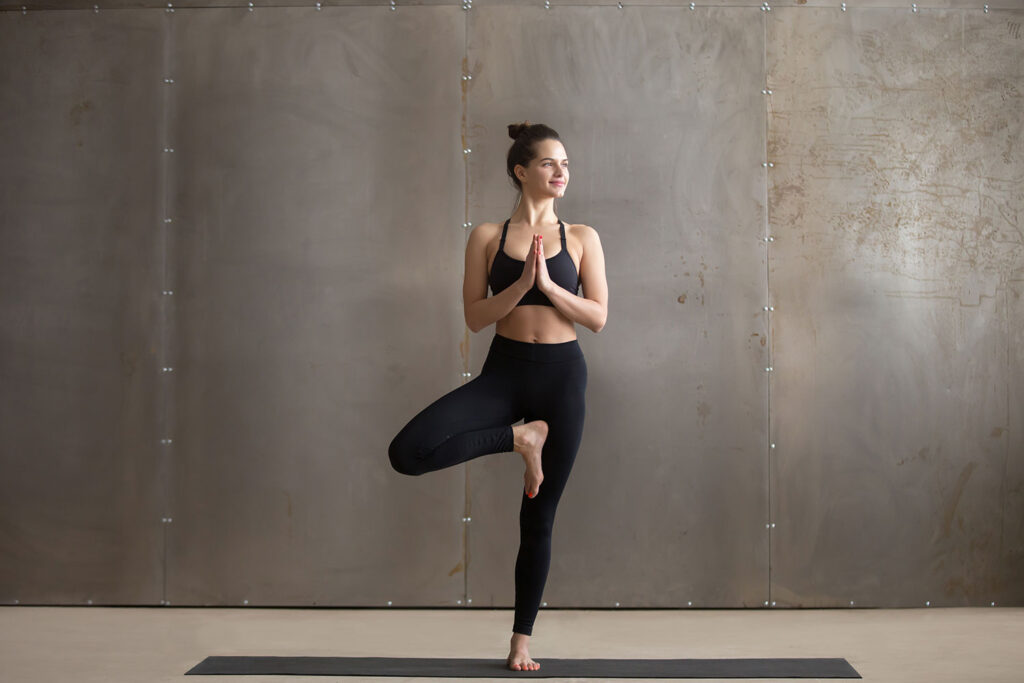
Tree is an excellent standing balance for beginners to concentrate on in order to develop concentration and clarity, as well as to learn to breathe while standing and keeping one foot balanced.
Start with your feet together and your right foot on the inside of your left upper thigh. Make a prayer sign with your hands and locate a place in front of you where you can maintain a steady look.
Switch sides after holding and breathing for 8-10 breaths. Keep your abdominals engaged and shoulders relaxed and don’t lean in to the standing leg.
Warrior No. 6
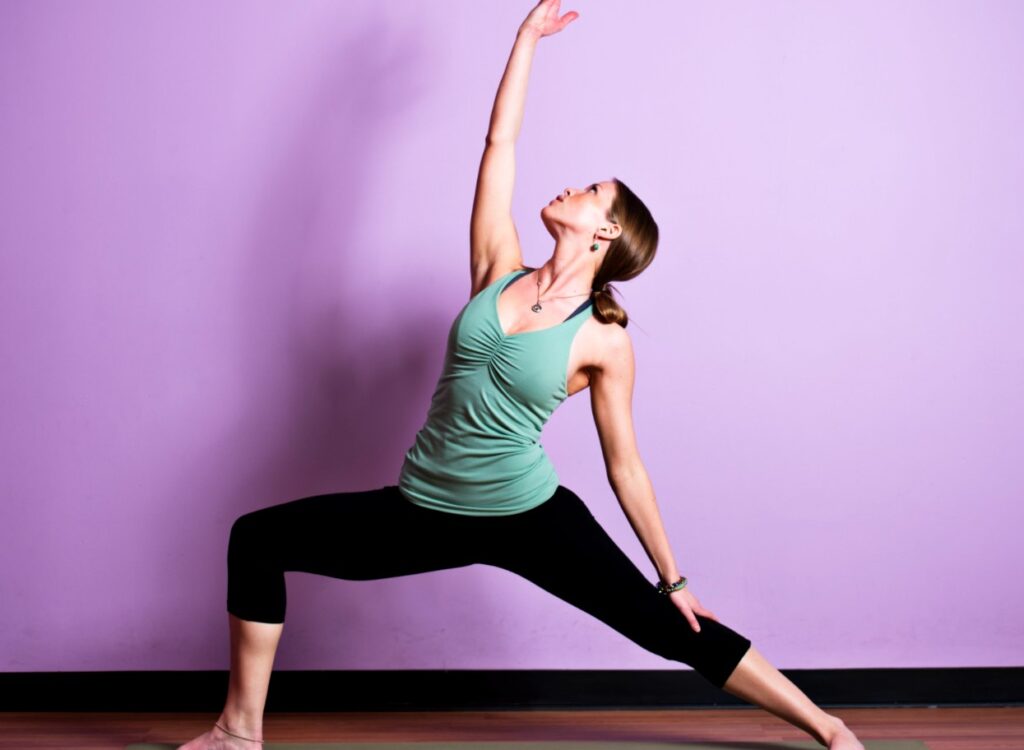
In a yoga practice, warrior postures are crucial for increasing strength and stamina. They boost our confidence while stretching our hips and thighs and strengthening our whole lower body and core.
Warrior 1 is a mild backbend that strengthens the legs, hips, buttocks, core, and upper body while stretching out the front body (quads, hip flexors, psoas).
Take a big stride back with your left foot approaching a lunge, then turn your left heel down and slant your left toes forward 75 degrees for warrior one.
Raise your chest and raise your hands to the sky. Step forward and do the same thing with the other leg.
Warrior 2 (#7)
Warrior 2 is a hip opener that also works the inner thighs and groin. Many side poses, such as triangle, extended angle, and half moon balancing, may be started from here.
How to do it: Stand with your feet apart by one leg’s length. Your right toes should be 90 degrees out and your left toes should be 45 degrees in. Maintain an equal torso between the hips by bending your right knee until it is exactly above your right ankle.
Extend your arms to the sides and look over your right hand. Hold for 8-10 breaths before straightening your right leg and shifting your feet to the other side to repeat.
8. Forward Bend While Sitting
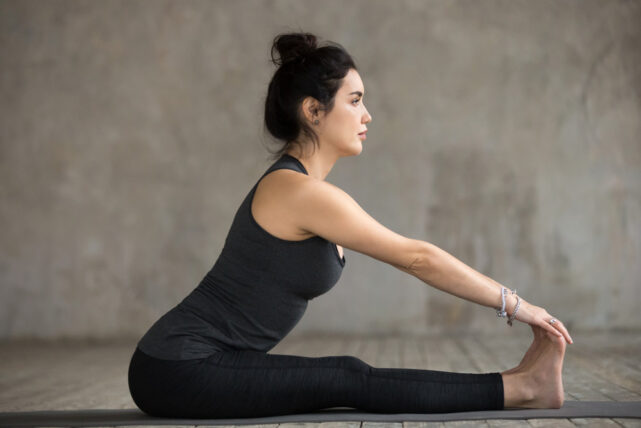
Forward bends are essential to include in your yoga practice to stretch the hamstrings, lower and upper back, and sides. The seated forward bend is an excellent place to begin opening up the body and learning to breathe through difficult postures.
If you experience any acute pain, stop; nevertheless, if you feel tightness as you fold forward but can still breathe, you will gradually loosen up and let go. As long as your feet are flexed and together, you may maintain your knees bent in the position.
Start by sitting with your legs crossed, your feet firmly flexed and without twisting in or out, and your hands by your hips. Begin to swing forward from your waist by lifting your chest. Imagine your belly button sliding towards the top of your thighs as you engage your lower abdominals.
Stop after you’ve reached your limit and take 8-10 deep breaths. Check to see whether your shoulders, head, and neck are all free.
Bridge Pose (nine)
A reverse bend is the inverse of a forward bend. Bridge is an excellent beginner’s back bend since it stretches the front body while strengthening the back.
How to perform it: Lie down on your back with your feet hip distance apart. Lift your buttocks off the mat by pressing hard on your feet. As you expand out your chest even further, interlace your hands together and push your fists down to the floor.
To activate your hamstrings, imagine pulling your heels on the mat towards your shoulders. Hold for 8-10 breaths before lowering your hips and repeating twice more.
The Child’s Pose is number ten
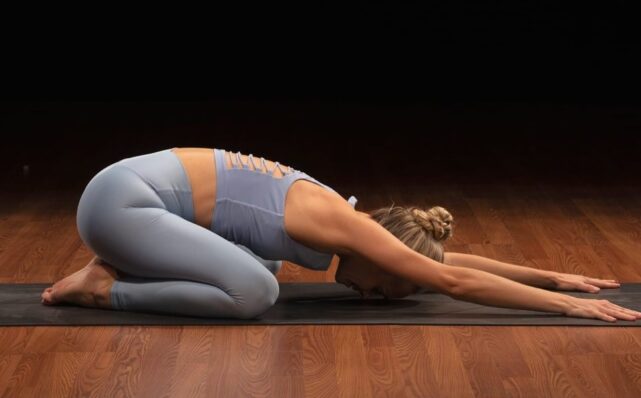
Everyone needs a nice resting position, and Child’s pose is a great one for beginners as well as advanced yoga practitioners.
It’s beneficial to master child’s pose to utilize when you’re tired in Down Dog, to stretch out the kinks before bed, or whenever you need a mental break and stress/tension release.
Start on your hands and knees, then pull your knees and feet together while sitting your butt back to your heels and stretching your arms forward. Allow your whole body to relax by lowering your head to the floor (or a block, cushion, or blanket). Keep holding for as long as you’d like!
It’s now time to begin your yoga adventure! Here you may join 48,292 other people in the free Yoga for Beginners Program.
Yoga is one of the most effective ways to get in shape. Yoga poses are one of the oldest exercises to have been practiced in the history of mankind, as they have been used by warriors, athletes, and even philosophers. Yoga asanas are an excellent way to strengthen your entire body, and help you in relieving stress, anxiety, and other mental disorders.. Read more about 10 yoga poses to do everyday and let us know what you think.
{“@context”:”https://schema.org”,”@type”:”FAQPage”,”mainEntity”:[{“@type”:”Question”,”name”:”Which yoga pose is best for beginners?”,”acceptedAnswer”:{“@type”:”Answer”,”text”:”
The best yoga pose for beginners is the downward facing dog.”}},{“@type”:”Question”,”name”:”What are the most important yoga poses?”,”acceptedAnswer”:{“@type”:”Answer”,”text”:”
The most important yoga poses are the ones that help you to maintain your balance and stability. These include standing poses such as Warrior I, Warrior II, Tree Pose, and Triangle Pose.”}},{“@type”:”Question”,”name”:”What are the 12 basic yoga poses?”,”acceptedAnswer”:{“@type”:”Answer”,”text”:”
The 12 basic yoga poses are called the Ashtanga Yoga Pradipika. They are as follows:
1. Uttanasana (Standing Forward Bend)
2. Virabhadrasana I (Warrior Pose 1)
3. Virabhadrasana II (Warrior Pose 2)
4. Adho Mukha Svanasana (Downward Facing Dog Pose)
5. Ardha Chandrasana (Half Moon Pose)
“}}]}
Frequently Asked Questions
Which yoga pose is best for beginners?
The best yoga pose for beginners is the downward facing dog.
What are the most important yoga poses?
The most important yoga poses are the ones that help you to maintain your balance and stability. These include standing poses such as Warrior I, Warrior II, Tree Pose, and Triangle Pose.
What are the 12 basic yoga poses?
The 12 basic yoga poses are called the Ashtanga Yoga Pradipika. They are as follows: 1. Uttanasana (Standing Forward Bend) 2. Virabhadrasana I (Warrior Pose 1) 3. Virabhadrasana II (Warrior Pose 2) 4. Adho Mukha Svanasana (Downward Facing Dog Pose) 5. Ardha Chandrasana (Half Moon Pose)
Related Tags
This article broadly covered the following related topics:
- yoga poses
- yoga poses for beginners
- basic yoga poses for beginners
- basic yoga poses chart
- yoga positions

